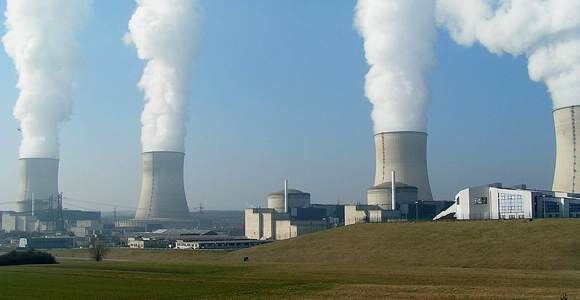
Ever since the nuclear power industry was born, its proponents have tried to find safer ways of using nuclear fission to generate electricity. And there is no doubt that the reactors built today are safer than those erected in the 1950s. However, the main problem with nuclear power as it stands is the inherently dangerous nature of the fuel, either Uranium-235 or Plutonium-239. There is, however, an alternative to these – Thorium-232. At the moment, a Norwegian firm called Thor Energy, is testing its use at the Halden research reactor in Ostfold Country, in the south east of Norway.
The CEO of Thor Energy, Oystein Asphjell, called the test “the beginning of a new era – not only for our company and our partners, but as an important evolutionary step in the nuclear power industry.”
Well, sort of. Thorium is a nuclear fertile metal, but unlike uranium-235, it isn’t fissile. For those of us who didn’t take nuclear engineering classes, it means thorium can be used in a nuclear reactor but it is not, by itself, capable of sustaining a nuclear chain reaction, which is what makes the reactor produce electricity. It needs a driver like plutonium to irradiate it and transform it into fissile uranium-232 (which is an isotope of uranium that doesn’t occur in nature as far as we can tell).
Thor Energy is using thorium pellets that are about 10% plutonium oxide, a mixed-oxide [MOX] fuel similar to uranium based MOX fuels used throughout the industry. In theory, this thorium MOX is a better fuel because its higher thermal conductivity and melting point should improve safety margins (meltdown risk could be reduced), and no new plutonium is produced in the reactor, which addresses the proliferation worries. Indeed, it will help use up the plutonium sitting in American and Russian nuclear warheads, And since thorium is much safer to handle and much more common than uranium-235, there are clearly other safety improvements that might stem from the use of thorium.
But, let’s not get ahead of ourselves. The test will run for the next five years, and then the pellets will undergo examination to see how close to theory the facts are. Other thorium tests are occurring in China and India (which is short on uranium) to name but two. If these tests are successful, further development will be needed before we switch our reactors over to Th-232.
And for what it’s worth, the US tested thorium at the Fort St. Vrain nuclear plant near where I grew up in Colorado. The proponents of thorium claim it was a huge step forward in our understanding of Th-232. All I know is that Fort St. Vrain is now fueled by natural gas.